Late Spring 2024 Snapshots From Extension’s Pollinator Paradise Garden
go.ncsu.edu/readext?1015931
en Español / em Português
El inglés es el idioma de control de esta página. En la medida en que haya algún conflicto entre la traducción al inglés y la traducción, el inglés prevalece.
Al hacer clic en el enlace de traducción se activa un servicio de traducción gratuito para convertir la página al español. Al igual que con cualquier traducción por Internet, la conversión no es sensible al contexto y puede que no traduzca el texto en su significado original. NC State Extension no garantiza la exactitud del texto traducido. Por favor, tenga en cuenta que algunas aplicaciones y/o servicios pueden no funcionar como se espera cuando se traducen.
Português
Inglês é o idioma de controle desta página. Na medida que haja algum conflito entre o texto original em Inglês e a tradução, o Inglês prevalece.
Ao clicar no link de tradução, um serviço gratuito de tradução será ativado para converter a página para o Português. Como em qualquer tradução pela internet, a conversão não é sensivel ao contexto e pode não ocorrer a tradução para o significado orginal. O serviço de Extensão da Carolina do Norte (NC State Extension) não garante a exatidão do texto traduzido. Por favor, observe que algumas funções ou serviços podem não funcionar como esperado após a tradução.
English
English is the controlling language of this page. To the extent there is any conflict between the English text and the translation, English controls.
Clicking on the translation link activates a free translation service to convert the page to Spanish. As with any Internet translation, the conversion is not context-sensitive and may not translate the text to its original meaning. NC State Extension does not guarantee the accuracy of the translated text. Please note that some applications and/or services may not function as expected when translated.
Collapse ▲In late 2008, I planted a demonstration pollinator garden at Chatham Mills to provide forage from early spring to late fall for pollinators such as honey bees, native bees, butterflies, flower flies, hummingbirds, beetles, and other beneficial insects. The garden features over 225 unique species of perennials, 85% of which are native to North Carolina. The garden is a great teaching tool that I use to conduct workshops and tours for hundreds of folks each year. It has taught me so much and I enjoy sharing this knowledge with others. Below you can see photos of the pollinator garden from mid-May through mid-June. There were over 60 species in bloom in mid-June!
Click here for links to all the seasonal photo collections.
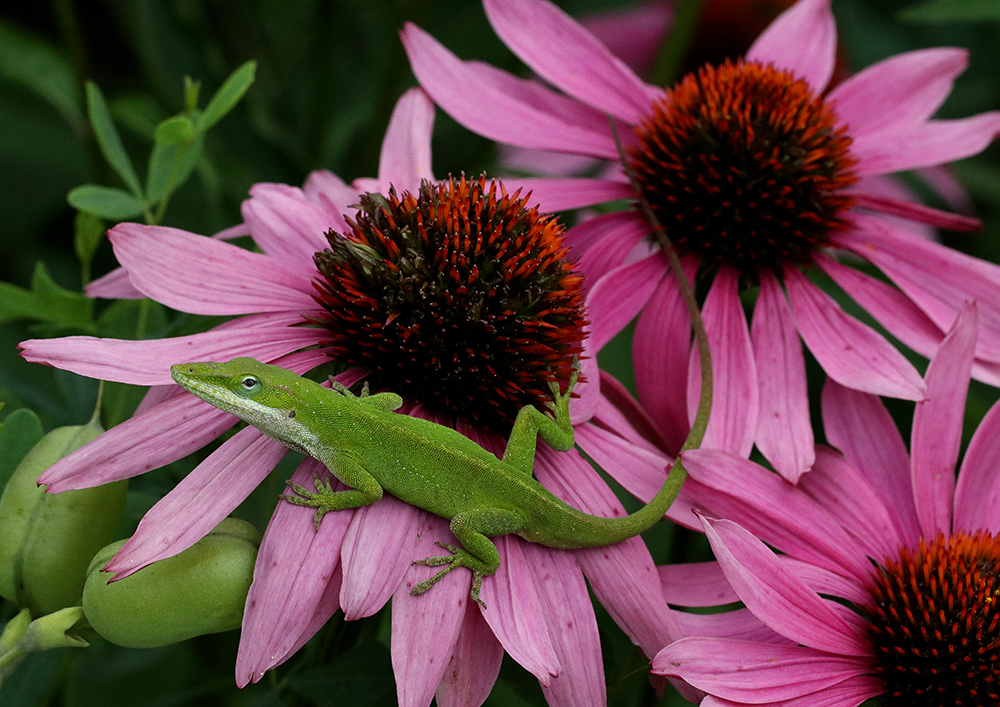
Carolina anole on purple coneflower (Echinacea purpurea). Photo by Debbie Roos.
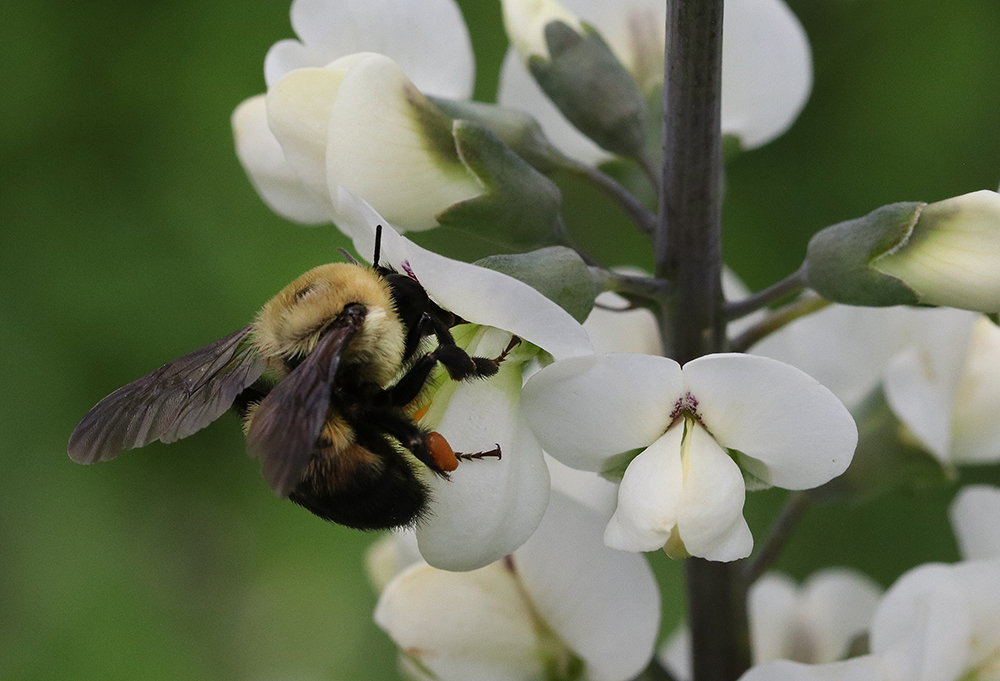
Bumble bee on while wild indigo (Baptisia alba). Photo by Debbie Roos.
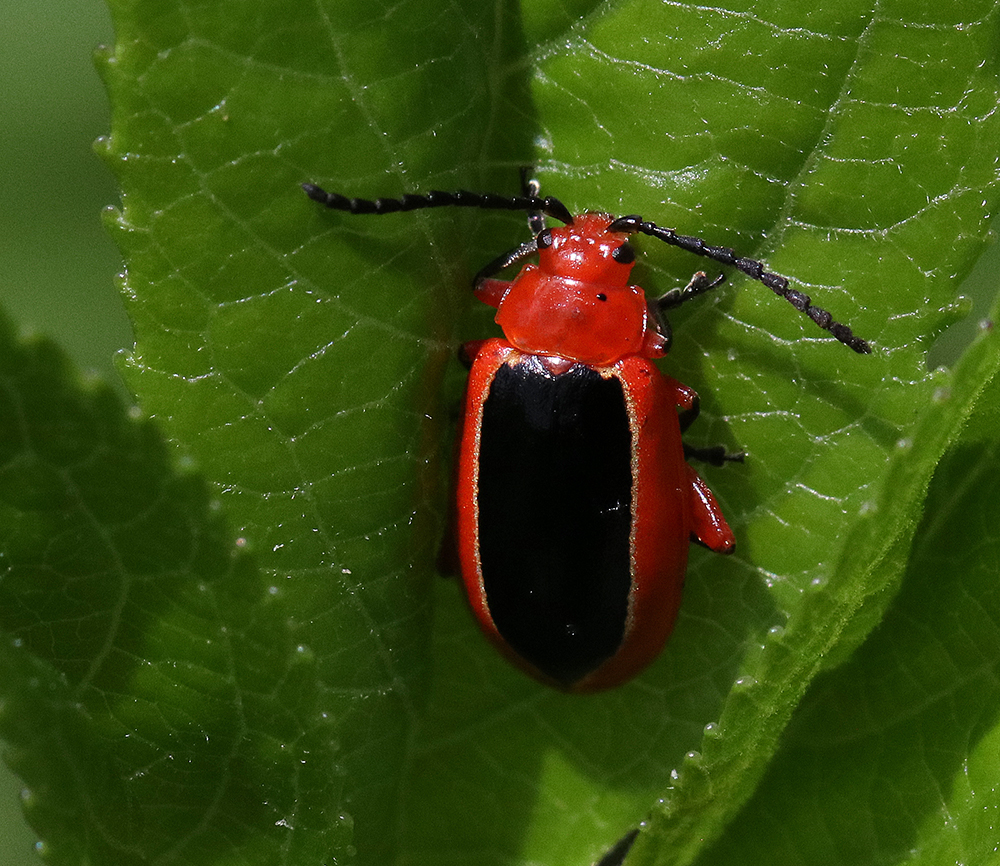
Passionflower flea beetle on purple passionflower vine (Passiflora incarnata). Photo by Debbie Roos.
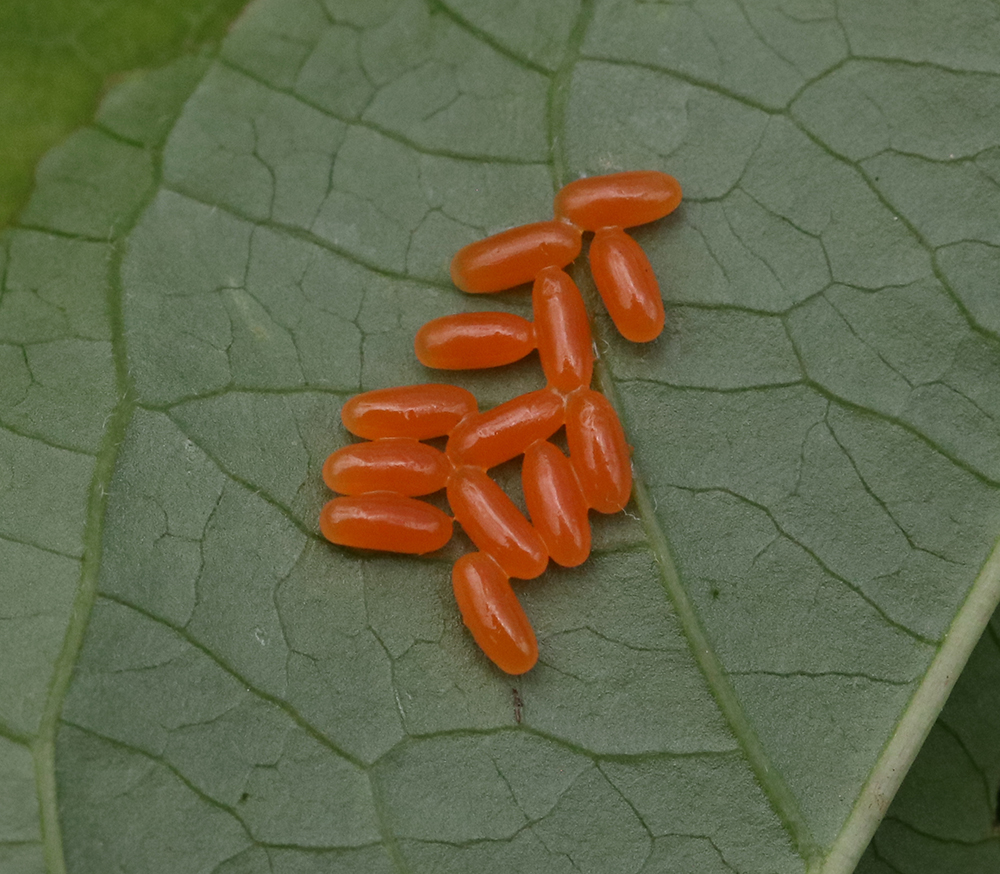
Passionflower flea beetle eggs on purple passionflower vine (Passiflora incarnata). Photo by Debbie Roos.

One of the parking lot islands in mid-May. Photo by Debbie Roos.

Carpenter-mimic leafcutter bee on purple milkweed (Asclepias purpurascens). Photo by Debbie Roos.
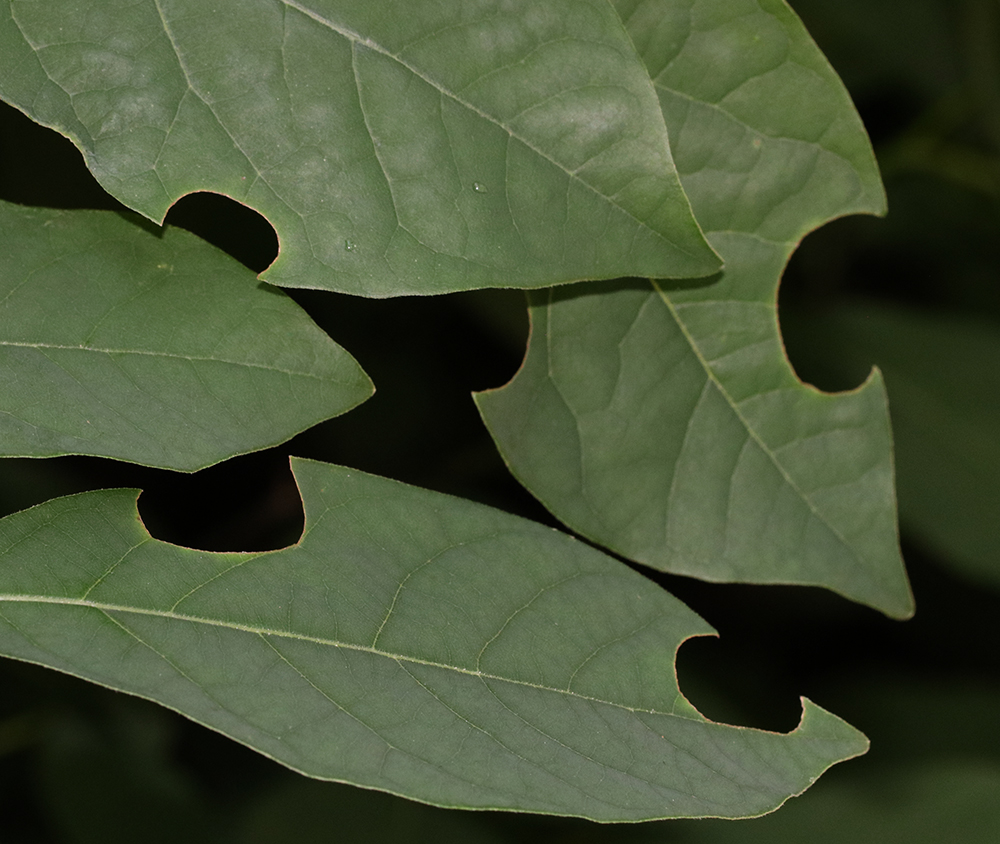
Leafcutter bee activity on spicebush (Lindera benzoin) leaves. The female leafcutter bees cut sections of leaves and use them to line their nest cavities. Photo by Debbie Roos.
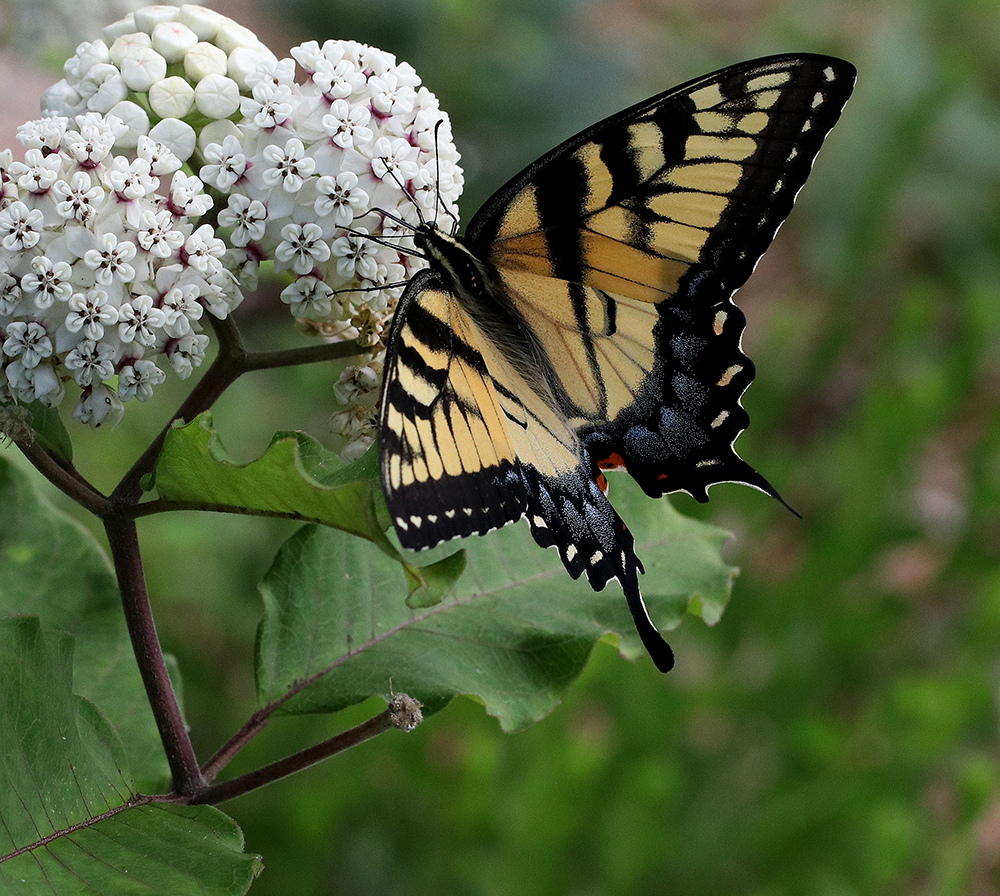
Eastern tiger swallowtail on redring milkweed (Asclepias variegata). Photo by Debbie Roos.

Hairy beardtongue (Penstemon hirsutus). Photo by Debbie Roos.
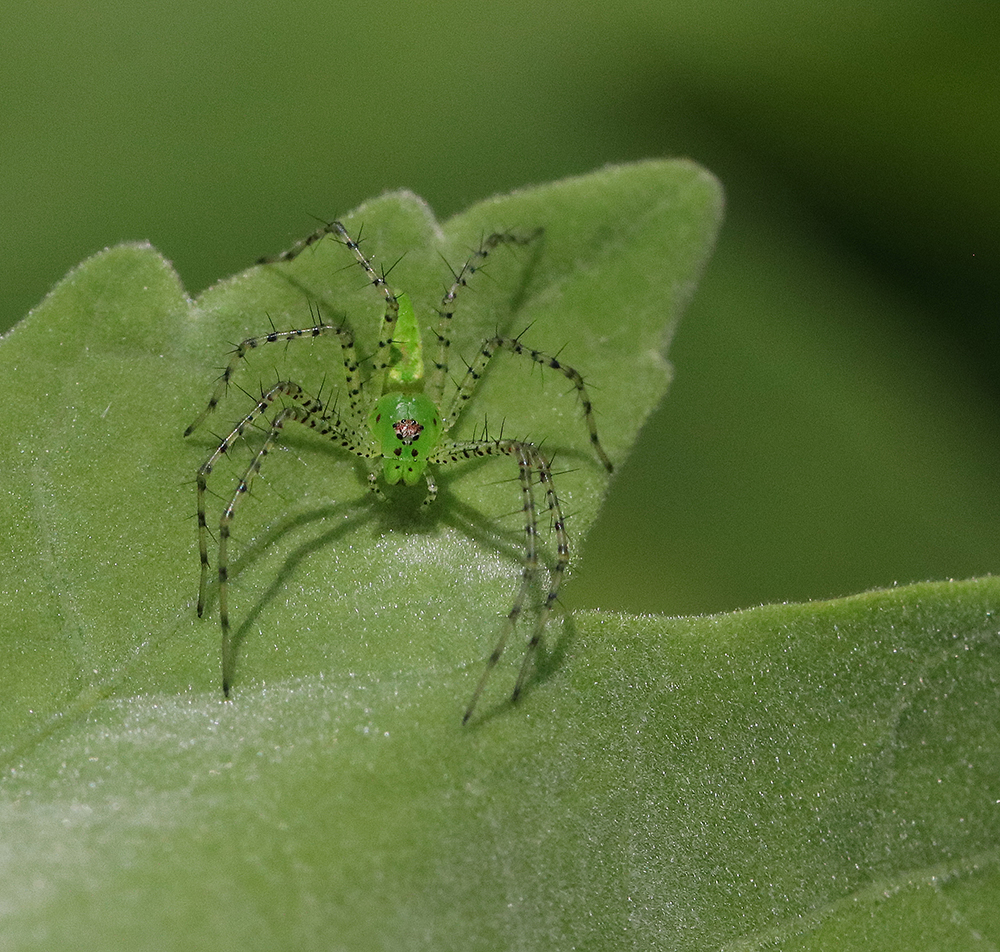
Young green lynx spider on swamp rosemallow (Hibiscus grandiflorus). Photo by Debbie Roos.
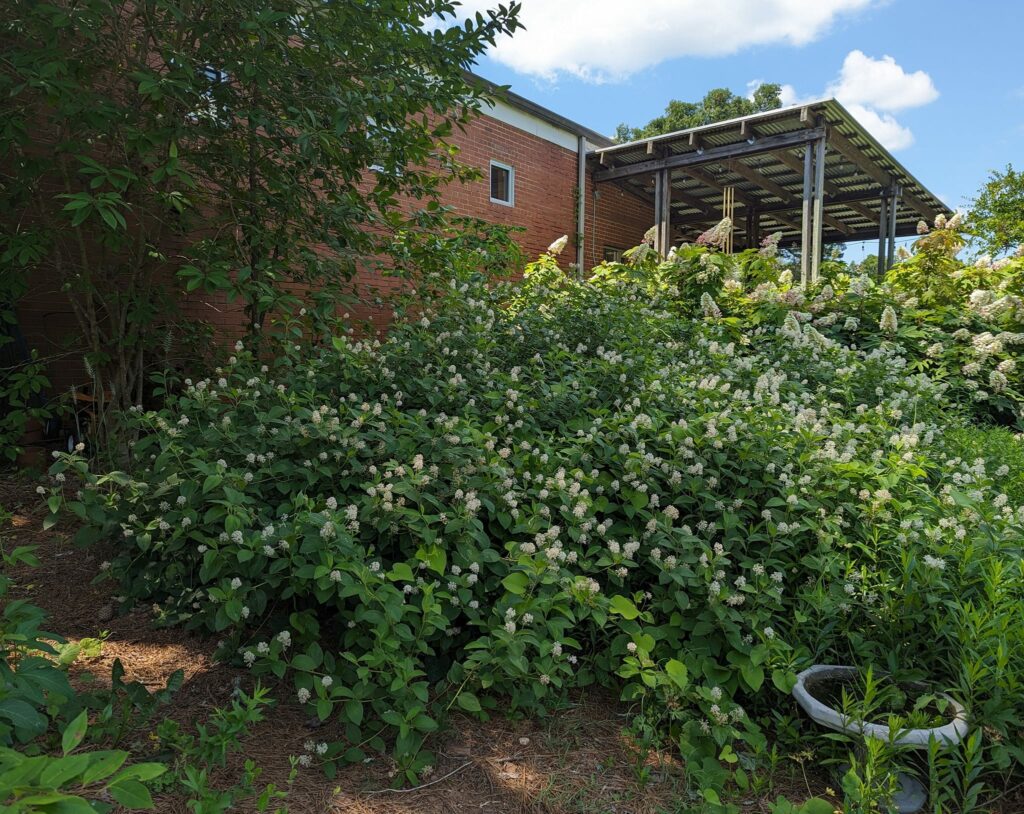
Native New Jersey tea (Ceanothus americanus) and oakleaf hydrangeas (Hydrangea quercifolia) in bloom in late May. Photo by Debbie Roos.
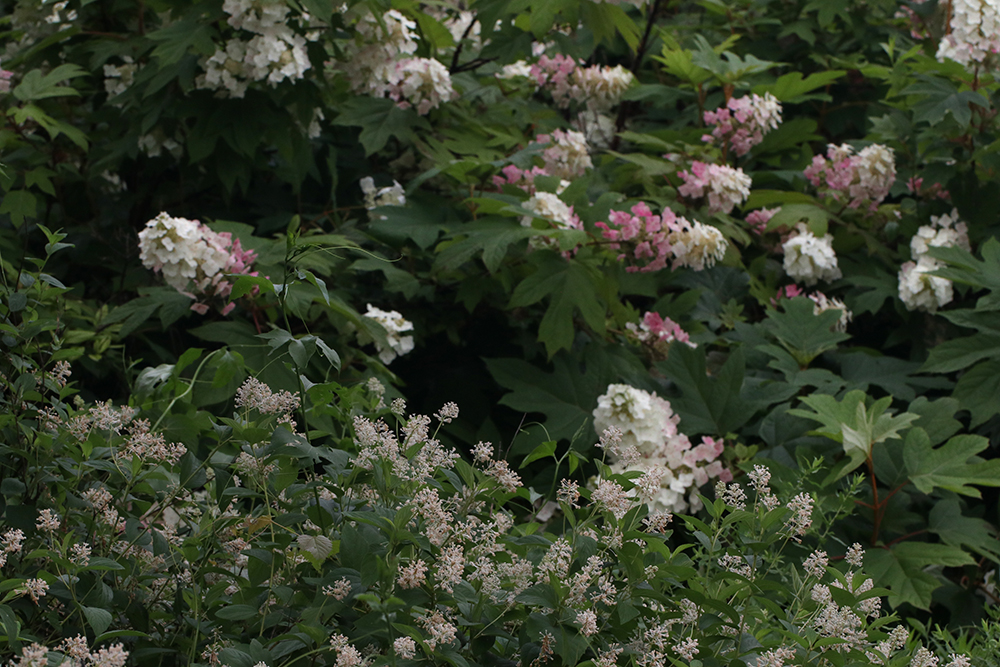
New Jersey tea backed by oakleaf hydrangea in late May. Photo by Debbie Roos.
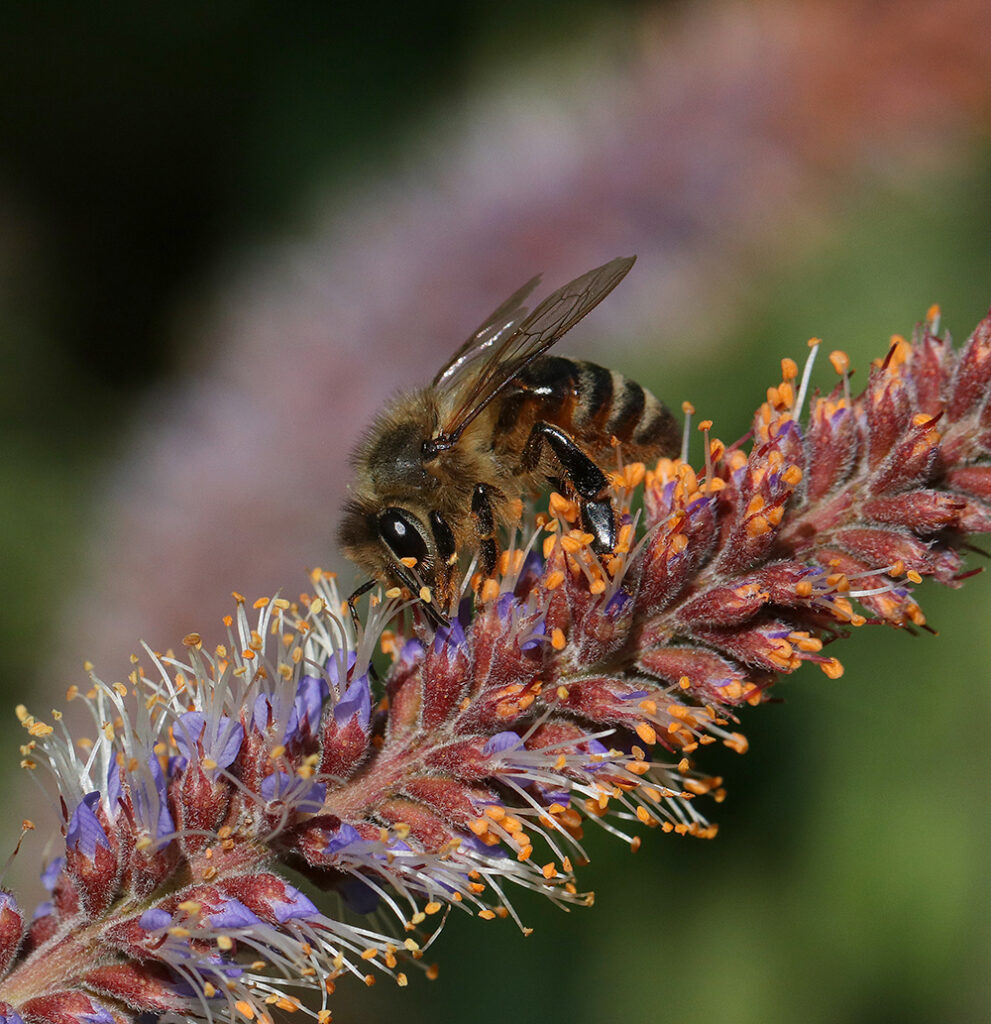
Honey bee on native dwarf indigo bush (Amorpha herbacea). Photo by Debbie Roos.
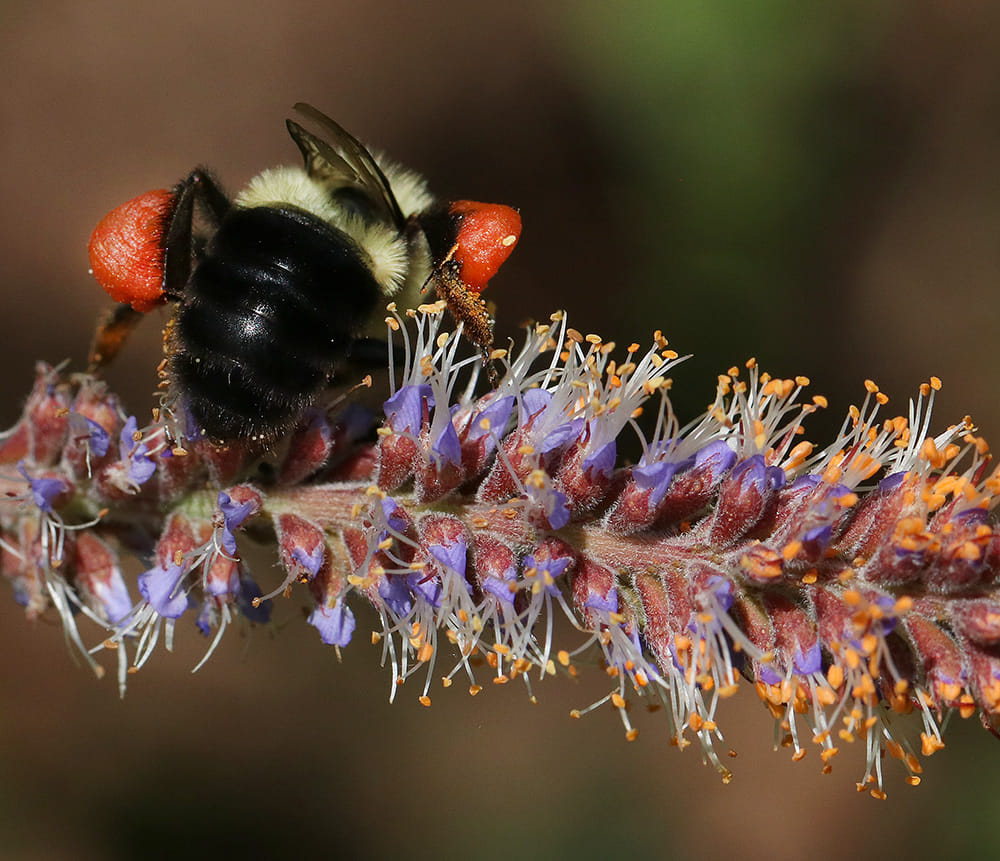
Bumble bee on native dwarf indigo bush. Photo by Debbie Roos.

Parking lot island in early June. Photo by Debbie Roos.
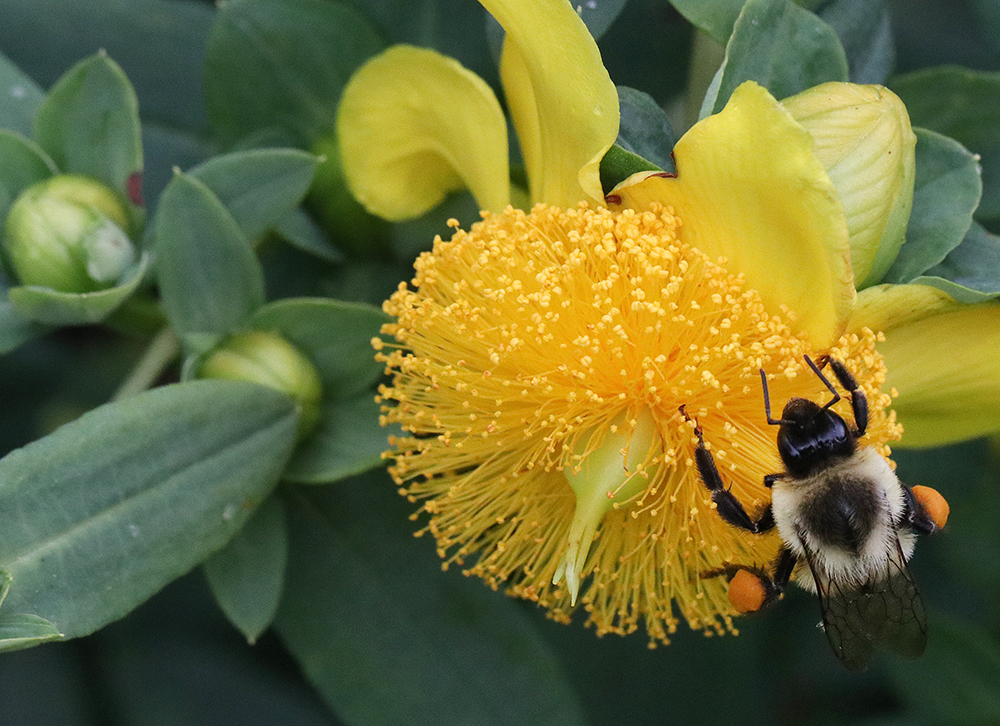
Bumble bee on St. John’s wort (Hypericum frondosum ‘Sunburst’). Photo by Debbie Roos.
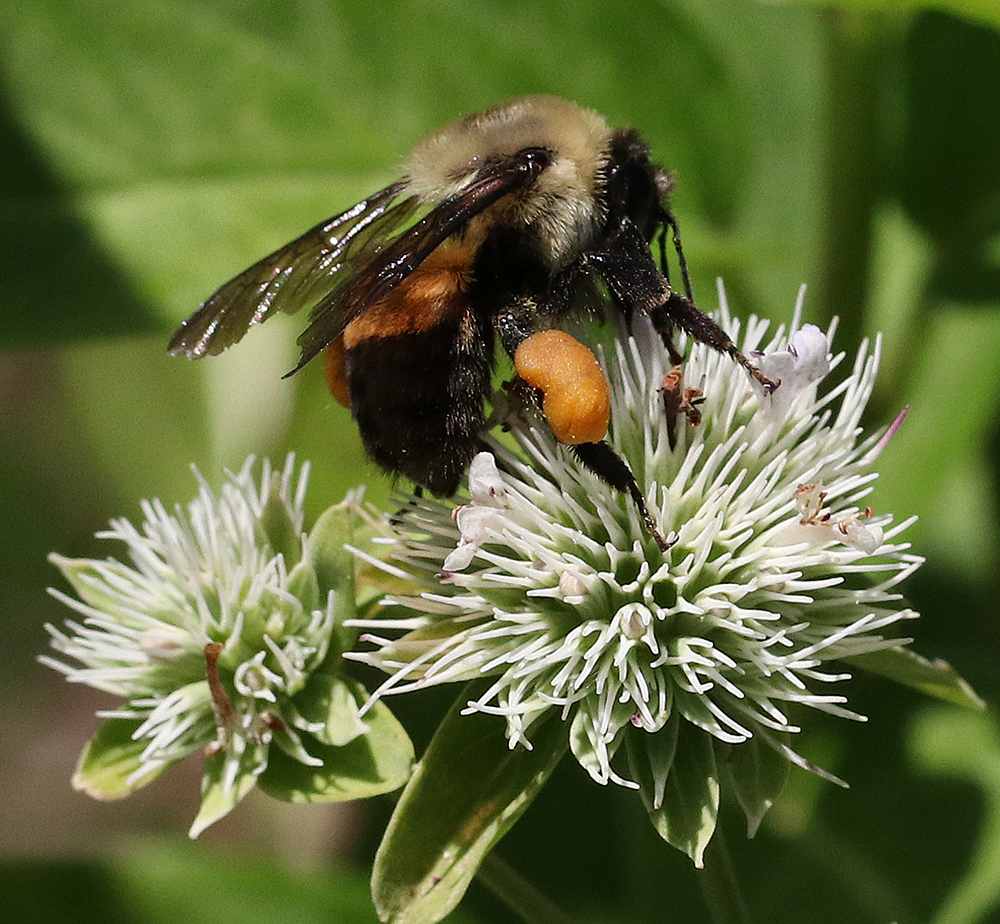
Bumble bee on Appalachian mountain mint (Pycnanthemum flexuosum). Photo by Debbie Roos.

Honey bee on buttonbush (Cephalanthus occidentalis). Photo by Debbie Roos.
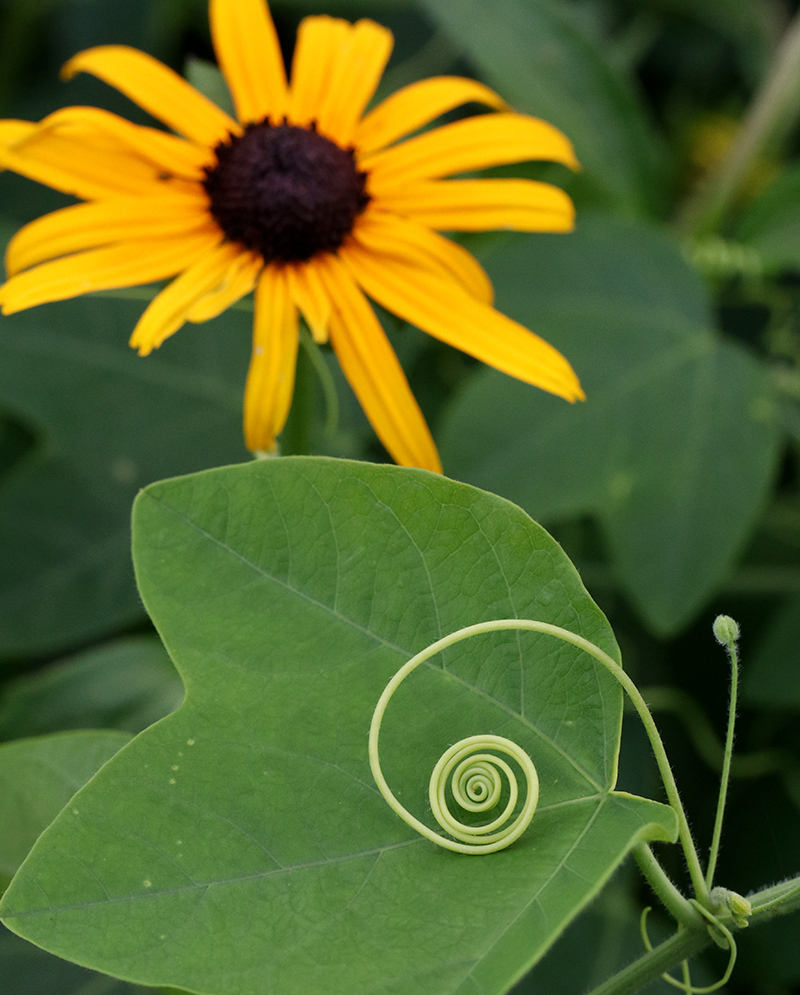
Yellow passionflower (Passiflora lutea) tendril in front of orange coneflower (Rudbeckia fulgida). Photo by Debbie Roos.

Purple coneflower (Echinacea purpurea) unfurling its petals. Photo by Debbie Roos.
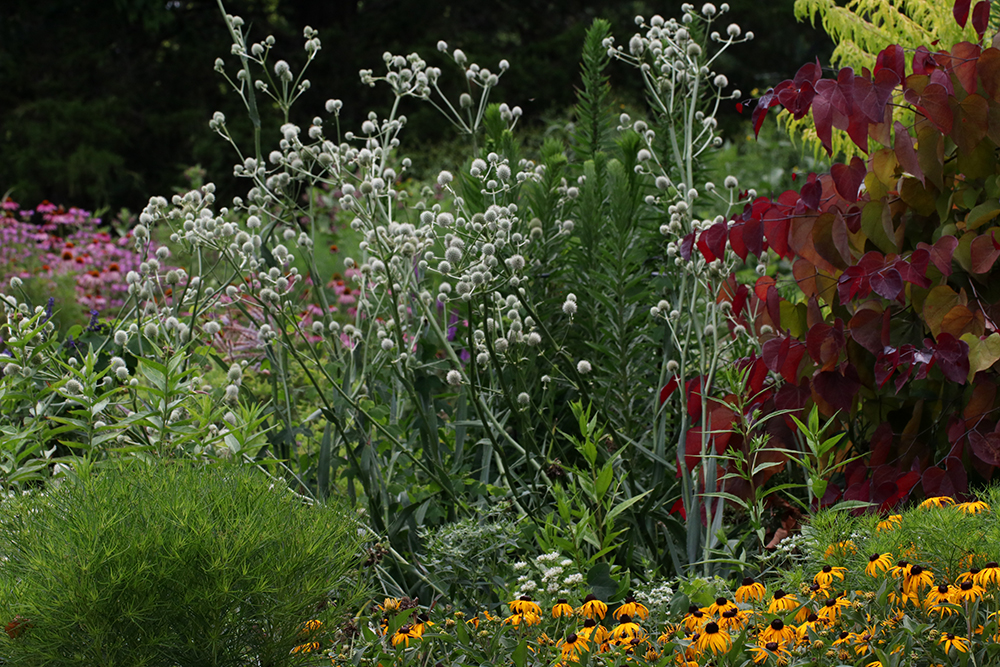
Parking lot island in mid-June. Photo by Debbie Roos.
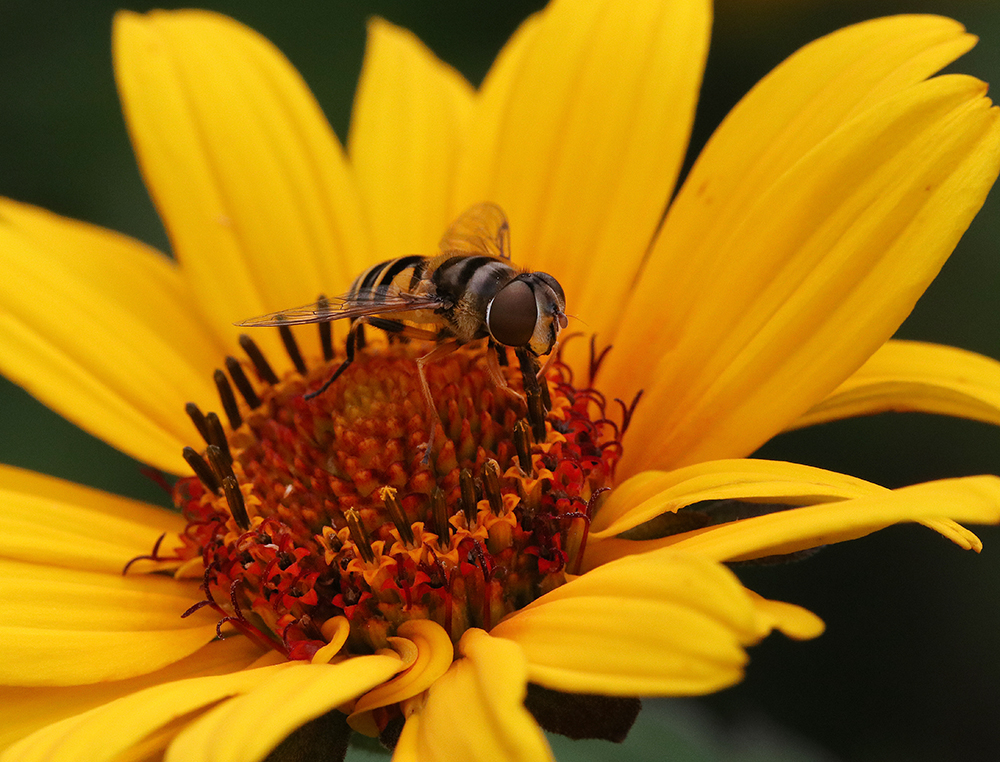
Syrphid fly on oxeye daisy (Heliopsis helianthoides). Photo by Debbie Roos.
For more information:
Pollinator Paradise Garden website
What’s in Bloom in the Pollinator Garden – updated bi-weekly!


